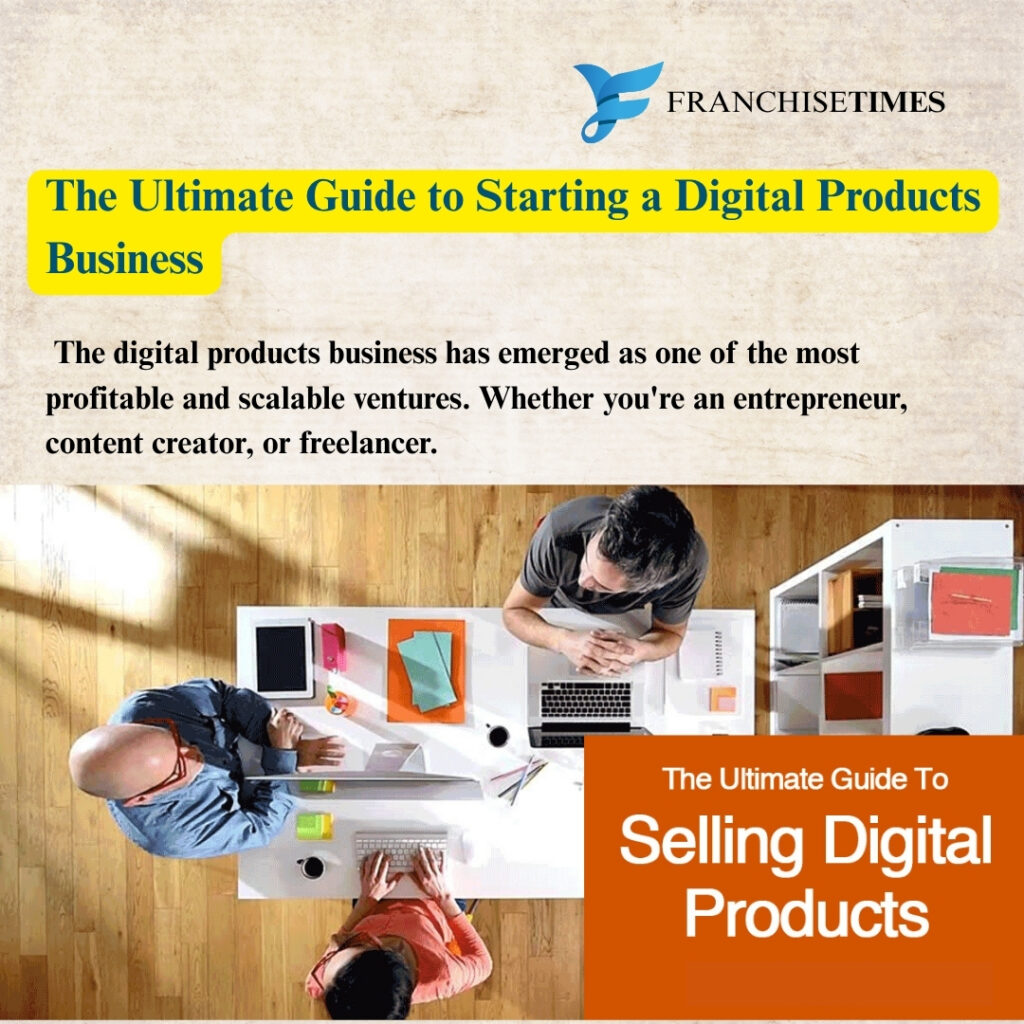The Ultimate Guide to Starting a Digital Products Business
In an increasingly digital world, the Digital Products Business Opportunities offer some of the most profitable and scalable ventures. Whether you’re an entrepreneur, content creator, or freelancer, stepping into this space lets you earn recurring income, maintain low overhead, and reach a global audience. In this blog, we explore the ins and outs of launching and growing a successful digital products business.

1. What is a Digital Products Business?
A Digital Products Business Opportunity involves creating and selling items in digital format. These products are delivered electronically, so you don’t need to manage inventory, shipping, or physical storage. Common examples include:
- Ebooks and digital guides
- Online courses and workshops
- Software and mobile apps
- Graphic templates and design assets
- Stock photography and video
- Audio files like music or podcasts
Because they are intangible, digital products allow you to replicate and distribute them with minimal effort after creation, making the business highly scalable.
2. Why Start a Digital Products Business?
A digital products business offers many benefits, making it attractive to modern entrepreneurs:
Low Startup Costs: You don’t need physical materials, warehousing, or shipping logistics.
Scalability: You can sell products to an unlimited number of customers worldwide.
Passive Income Potential: Once you create the products, they can continue to generate revenue with minimal involvement.
Location Independence: You can run business operations from anywhere with an internet connection since everything is digital.
High Profit Margins: You can maximize profits without recurring production or distribution costs.
Because of these advantages, countless solopreneurs and companies now focus on creating digital products.
3. Popular Types of Digital Products to Sell
Several profitable niches exist within the digital products business. Choosing the right type depends on your expertise, interests, and market demand.
a. Ebooks and Guides
Informational content in the form of ebooks continues to attract high demand. Whether you specialize in fitness, business, or DIY crafts, an ebook lets you package your knowledge in a format you can monetize.
b. Online Courses and Webinars
Educational platforms like Udemy, Coursera, and Teachable have made it easy for anyone to sell video-based courses. Passive income is generated as learners enroll over time.
c. Software and Mobile Applications
If you have programming skills or can collaborate with developers, building a SaaS product or app can be highly rewarding. Subscription-based models are often used in this niche.
d. Templates and Digital Tools
“Designers and content creators often buy pre-made templates (resumes, presentations, planners, social media kits). This category demands creativity and a clear understanding of target audiences.”
e. Audio and Video Products
Podcasts, music tracks, stock footage, or even meditation audio can be sold via platforms like Gumroad, AudioJungle, and Pond5.
Many creators have built thriving digital products businesses by focusing on one core product type before expanding their offerings.
4. How to Start a Digital Products Business
Starting a digital products business involves several key steps. While it may seem overwhelming at first, each stage can be simplified with the right tools and strategy.
Step 1: Identify Your Niche and Audience
Understanding what your target audience needs is crucial. Conduct market research, explore forums like Reddit and Quora, and analyze competitors to find profitable gaps.
Step 2: Create High-Quality Products
Quality and value are what differentiate successful digital products from mediocre ones. Invest time in design, content, and usability. Reviews and feedback should be used to improve.
Step 3: Choose a Platform
Several platforms allow you to sell digital products, such as:
- Shopify (using digital product plugins),
- Gumroad,
- Sellfy,
- Etsy (for design templates),
- Teachable (for courses).
These platforms handle payment processing, downloads, and even marketing tools in some cases.
Step 4: Set Up Payment and Delivery
Automated systems should be set up to ensure that the product is delivered instantly after purchase. PayPal, Stripe, and digital delivery plugins can streamline this process.
Step 5: Launch and Market Your Business
Use email marketing, social media, SEO, and paid ads to attract customers. Your brand’s credibility can be enhanced by offering free trials, samples, or lead magnets.
5. Marketing Strategies for Digital Products
Even the best products will not sell without proper promotion. Marketing is where many digital entrepreneurs focus their ongoing efforts.
a. Content Marketing
“Create blogs, guides, and how-tos around your niche to establish your authority and attract organic traffic. Naturally incorporate keywords like Digital Products Business Opportunities.”
b. Social Media
Platforms like Instagram, LinkedIn, Pinterest, and YouTube allow for visual storytelling and customer engagement. Share product benefits, user reviews, and behind-the-scenes content.
c. Email Marketing
Build a mailing list using lead magnets like free ebooks or checklists. Regular newsletters and promotional emails can drive conversions and upsell opportunities.
d. Influencer Collaborations
Partner with influencers in your niche for product shoutouts or affiliate promotions. Their audience can offer an immediate boost to your visibility and trustworthiness.
e. Paid Advertising
Facebook Ads, Google Ads, and Instagram promotions can help in reaching a larger audience quickly. A/B testing should be used to optimize results.
The key is consistency and adaptability. Marketing efforts should be adjusted based on analytics and customer feedback.
6. Challenges in the Digital Products Business
Like any business model, the digital products business comes with its own set of challenges.
a. Competition
The low barrier to entry means the market is saturated in many niches. A unique value proposition (UVP) and targeted branding are essential to stand out.
b. Digital Piracy
Once a product is online, it can be illegally copied and distributed. To mitigate this, use secure download links, license agreements, and digital rights management (DRM) where possible.
c. Customer Support
Though products are digital, customer service is still essential. Queries related to downloads, refunds, or usage must be handled promptly and professionally.
d. Technical Barriers
Beginners often struggle to set up delivery systems or design visually appealing products. However, tools like Canva, Thinkific, and Shopify now simplify this process more than ever.
By addressing these hurdles proactively, long-term success becomes more achievable.
Conclusion
The Digital Products Business Opportunities are revolutionizing how entrepreneurs build income streams and reach global markets. With minimal startup costs and unlimited scalability, this model attracts creators worldwide. By delivering value, staying consistent, and using strategic marketing, anyone can carve out a profitable niche in this dynamic space
Whether you’re just starting or scaling an existing venture, the potential of digital products continues to grow. Now is the best time to dive in, create something valuable, and build your digital empire.
